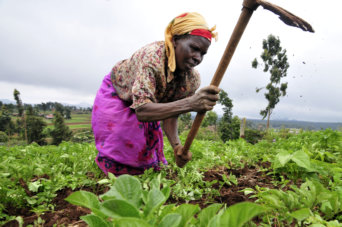- About
- Topics
- Picks
- Audio
- Story
- In-Depth
- Opinion
- News
- Donate
- Signup for our newsletterOur Editors' Best Picks.Send
Read, Debate: Engage.
Despite living in an era of increasing abundance and production of greater quantities of food than ever in history, one in seven people are still officially labelled as ‘undernourished’ by the United Nations. Instead of decreasing starvation rates, thanks to the supposed benefits of intensive farming, the truth is that hunger has been on the rise since 2014. The appalling irony is that the vast majority of the world’s starving people (75%) are agricultural workers.
Hunger, therefore, is a huge paradox of modern times: if the world today produces enough food to sustain the nutritional requirements of 12 billion people, how can we explain that around the world 30,000 people die of hunger every single day?
The figures, provided by the Food and Agriculture Organisation (FAO) of the United Nations, demonstrate that agriculture is an industry of tragic contradictions.
Today, the most significant challenge in fighting global hunger is not related to food production, but rather distribution, as a lack of access to food is what most greatly perpetuates hunger. By turning agriculture into a profitable business, now in the hands of a few multinationals, food has become a commodity. Agricultural modernisation has, consequently, failed to eradicate hunger and has, instead, had disastrous environmental impacts, resulting in the homogenisation of food, whilst promoting monoculture dedicated to export markets and not providing sufficient food for local populations.
The model of intensive farming has failed because it hasn’t achieved its principal goal: to feed people. This is why, in order to reach the UN Sustainable Development Goal of ending hunger by 2030, patterns of agricultural production and distribution must be fundamentally altered so they are no longer subject to the logic of market forces.
Moreover, the distribution sector must take a large share of the blame. Intermediaries have been allowed to become too powerful in past decades, having been able to make decisions that greatly affect the global population, deciding on what is eaten and how much producers are paid.
It is for all these reasons and many more that several world-class collectives have organised themselves in the defence of models of implementation of food sovereignty, focussing on diversity, consuming local produce, regaining freedom of choice and limiting dependence on external food markets. So that the right to eat becomes the priority.
